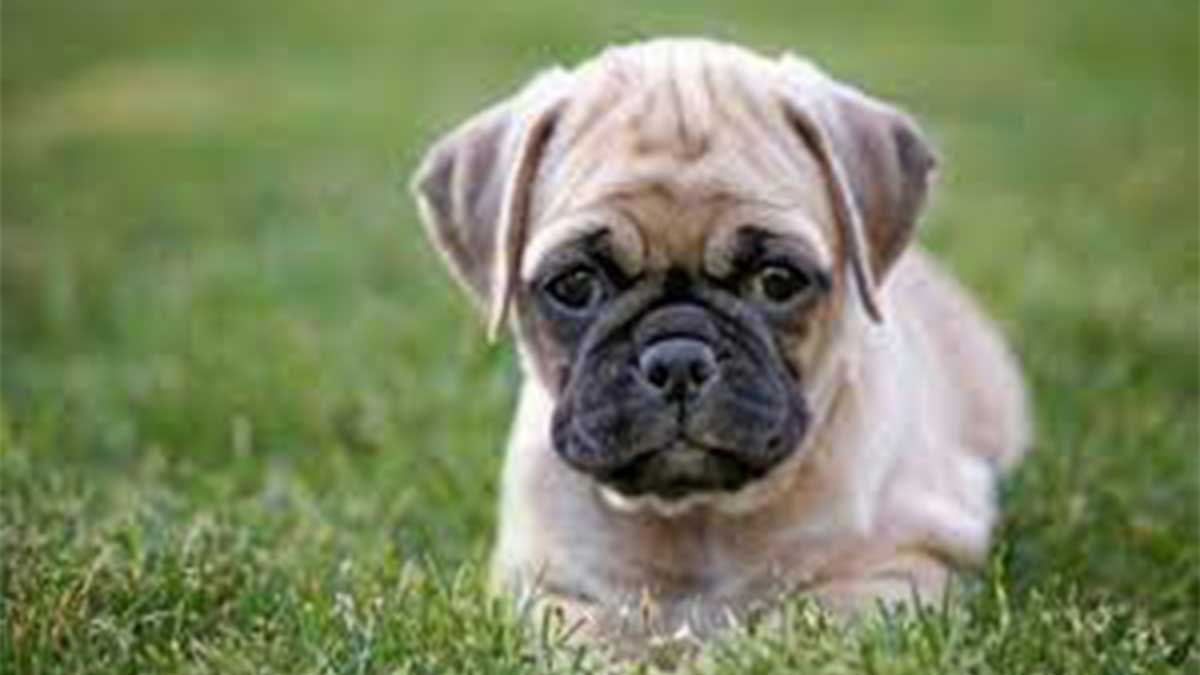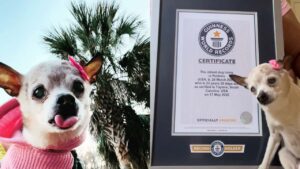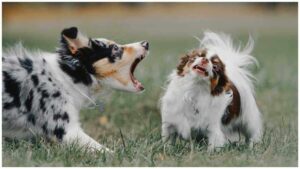If you want to learn more about Chugs (Chihuahua Pug mixes), you’ve come to the right place.
In this guide, you’ll discover:
- Why Chugs are good family dogs.
- Thirty-one interesting Chihuahua Pug facts (from lifespan to origins, I cover almost everything).
- Common Chihuahua Pug health problems (make sure to check this before you become a Chug parent).
- And way, way more…
Table of contents [show]
Lifespan
Chugs typically have healthy and long lifespans.
It can be helpful to know what your Chug’s lifespan can be.
I’ll cover:
- How long do they live.
- Hybrid vigor.
- Genetics.
#1: Chihuahua Pug ‘s live between 10 – 13 years
We all hope our dogs will be with us for a long time.
According to Vet Street, Chugs, on average live between 10 – 13 years. Both Pugs and Chihuahuas are known to have long lifespans.
Of course, lifespan can vary depending on health and lineage. It can be helpful to look at the parental lifespans as well.
PetMD lists Pug and Chihuahua lifespans as:
- Pugs, on average live 12 – 15 years, and
- Chihuahuas, on average live 14 – 18 years.
Chihuahua Pug can live longer than 13 years.
Here’s what you can do to extend your Chug’s lifespan:
- Exercise them daily.
- Visit the vet for check-ups, and stay up-to-date on vaccinations.
- Keep them on a well-balanced diet.
#2: They may have hybrid vigor
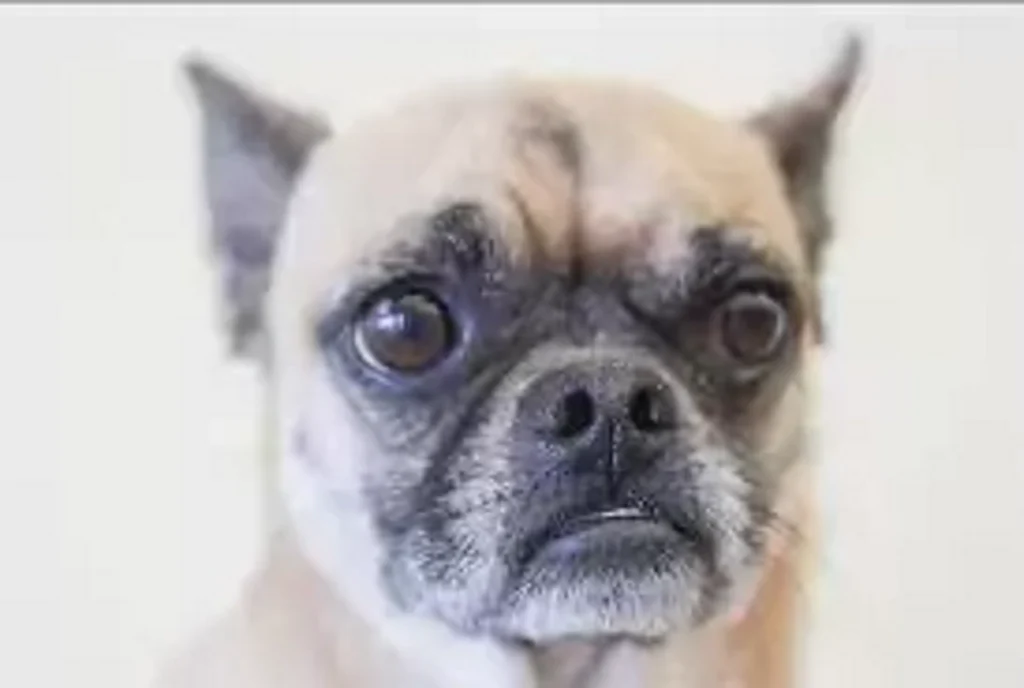
Hybrid vigor happens when breeds are crossbred.
It causes mixed breeds to have superior traits.
These traits can be both physical and biological.
A 2016 study published in The Veterinary Journal found:
‘…Hybrid vigor occurs in dogs, and it can exploit it for:
- Fitness.
- Welfare.
- Improved health.
Put: Your Chihuahua Pug may have the best traits from both parents.
This can, in turn:
- Provide more stamina.
- Increase their lifespan.
- Make them more resistant to disease.
Scientifically, hybrid vigor is better known as heterosis. A 2010 study found that heterosis can:
- Develop faster.
- Have higher fertility.
- Exhibit greater biomass.
This study was published in The Plant Cell.
#3: They can be more susceptible to illness
This is essentially the opposite of hybrid vigor. Parents can pass down unwanted health traits. Thus, Chug puppies can end up with health conditions from both parents.
According to Embrace Pet Insurance, these include:
- Eye injuries.
- Hip dysplasia.
- Luxating patellas.
- Eye diseases and dry eye.
Knowing the histories of the parent dogs is helpful, and it can aid you in caring for your Chug.
However, it may be tricky or impossible for you to get that information.
A specialized veterinarian can help with this. Seek out vets who specialize in minor dog treatment.
Origins
Chug crossbreeds became popularized in the early 2000s. This occurred mainly in the United States and Great Britain.
Since then, Chugs have become one of the most sought-after designer breeds, and this may lead owners to be curious about their origin.
Chugs alone do not have a vast history yet. However, their parents, the Chihuahua, and the Pug do.
#4: There is not a breeder credited for this crossbreed
In some cases, breeders are credited for certain combinations.
There is no breeder credited for the Chihuahua Pug mix.
This can be for several reasons:
- The creator chose not to be credited.
- The first Chug crossbreed cannot be traced.
- It was a common crossbreeding before it became popularized.
Breeds are crossbred for many different reasons.
Crossbreeding is often done by professional breeders, and they try to breed for the most desirable traits.
However, this crossbreed can also happen randomly or by accident.
This then results in Chihuahua Pug ‘s being sold by nonbreeders. In this event:
- The puppies will probably be cheaper, and the lineage information may be minimal.
#5: Chugs have both Aztec and Chinese roots
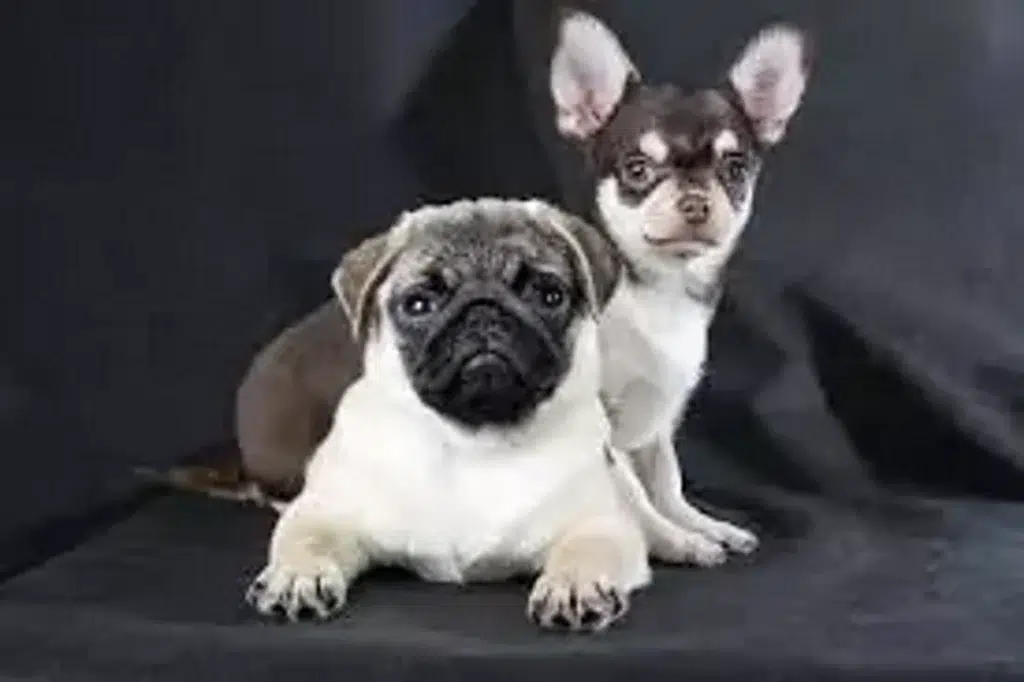
To know the Chugs’ history, we must look to the parents.
Chihuahuas came from the Aztecs, while Pugs came from China.
According to the American Kennel Club (AKC):
- Aztecs have been credited for breeding and refining Chis, and
- Americans became interested in Chihuahuas in the 1800s.
- Chihuahuas may be the descendent of the Techichi from the 1500s.
Meanwhile, Pugs can be historically traced even further back than Chihuahuas.
According to the AKC, Pugs:
- They were favorite pets for ancient Chinese emperors.
- Came to Europe in the 1500s by way of the Dutch.
- They are one of the oldest breeds, dating back to 400 B.C.
#6: They are historically companion pets
Chugs are a small dog breed.
Small dogs, in some cases, also known as toy dogs, are considered companion pets.
Comparatively, big dogs are more often to be assigned jobs, including:
- Hunting.
- Herding.
- Guarding.
On the other hand, small dogs often do not have additional jobs, and their sole job is to be companions.
Historically, both Chihuahuas and Pugs were favored by royalty. And they became symbols of status over time.
These breeds were undeniably tied to historical figureheads. Consider:
- These could be seen as ancient examples of service animals.
- These dogs may have served an emotionally supportive role.
- Even today, Chihuahuas and Pugs are used as emotional support animals.
Size and looks
Believe it or not, Chugs are small like their parents.
There is a lot of variation between Chugs.
Next, I will talk about:
- Their height.
- Size variations.
- Color variations.
#7: They reach 8 – 12 inches in height
Chugs are going to be small no matter what. Typically, Chihuahua Pug are between 8 – 12 inches tall.
Females may be shorter than males on average.
This height comes from the mixing of Chi and Pug heights. On average, Pugs are 10 – 13 inches in height, and Chihuahua heights vary more. Chis can be anywhere from 6 – 13 inches tall.
#8: Their size is dependent on the parents
Like all of us, Chugs will take after their parents.
The height of the parent dogs will affect your Chug’s height.
Pugs do vary in size, but not like Chihuahuas.
A Chi’s size can range greatly. It is highly dependent on what type of Chihuahua it is.
Kennel clubs only recognize two official Chihuahua variations.
- Apple head with long coat.
- Apple head with short coat.
However, there are 6 unofficial types. They include:
- Fawn.
- Teacup.
- Long coat.
- Short coat.
- Deer head.
- Apple head.
Teacup Chihuahuas are the smallest variety. They are often between 6 – 8 inches in height.
If a Pug is mixed with a teacup Chi, the Chug puppies may be very small.
#9: Color and head shape can vary greatly
As mentioned, there is a lot of diversity to Pugs and Chi’s.
The color and head shape can vary greatly for Chugs.
Both Pugs and Chihuahuas come in many colors.
Chihuahua Pug ‘s typically are available in 5 main colors. They are:
- Fawn.
- Black.
- White.
- Cream.
- Brown.
As far as head-shape, this trait is largely affected by the Chi side.
Chihuahuas can have two shapes of heads:
- Deer head shaped.
- Apple-dome shaped.
The deer head term comes from the resemblance to a baby deer’s head. In fact, Deer head Chihuahuas are much more likely to be taller.
Apple head Chihuahuas are typically teacup size. This is because the AKC standard only accepts apple heads.
By AKC standard, the Chi must also be 6 pounds or less.
Apple head Chihuahuas are often bred much smaller. This is so they can compete in dog shows.
Thus, the head shape can also affect the Chug’s size.
Weight
Like a Chug’s appearance and height, weight can vary. Most Chugs weigh between 10 – 20 pounds.
In this section I’ll cover:
- Stomach sensitivity.
- Proneness to obesity.
- How much they weigh.
#10: They weigh between 10 – 20 pounds.
There are many factors that can affect their weight.
The truth is any small dog’s weight will be easily affected.
Factors include:
- Diet.
- Exercise routine.
- Parental dog weights.
Diet and exercise are crucial components.
Your Chug should have a regular exercise routine. Plus, a well-balanced diet is a necessity.
Pet Guide suggests Chihuahua Pug should get at least 30 minutes of exercise per day.
However, this should not include other bathroom walks. Dogs should be given 3 – 5 chances to use the bathroom per day.
#11: They may be prone to obesity
Small dogs like Chugs, Chihuahuas, and Pugs gain weight easily. They are more prone to weight gain and obesity.
Excessive weight gain or obesity has many causes. These include:
- Lack of exercise.
- Excessive treats.
- An unbalanced diet.
- Meal portions that are too big.
It is key to know how much to feed your Chug.
Dog foods are made specifically for certain dog sizes. Small dog foods are often made up of smaller pieces. This makes it easier for small mouths to eat.
However:
- It is also easier to overfeed with smaller food.
- Always check the portion recommendations on food packaging.
You may be unsure if your Chug’s diet is balanced.
Note: It is best to consult your vet.
They can help you build the healthiest meal plan for you Chug.
#12: Chugs have sensitive stomachs
It is not uncommon for smaller dogs to have sensitive stomachs. Hence, your Chug is likely to have some stomach or digestive sensitivities.
This is largely related to their size. Even small amounts of unusual or human foods can upset them.
Some foods are especially toxic. Here are some foods you should always avoid:
- Xylitol.
- Grapes.
- Raisins.
- Onions.
- Chocolate.
It is also best to avoid feeding Chihuahua Pug foods with any seasonings. Here are a few non-toxic treat ides:
- Small apple pieces.
- Cooked chicken breast.
- Small pieces of cheese or cheese cubes.
All treats, either dog or human, should be kept to a minimum. Your Chug’s dog food should always be central to their diet.
Coat
Knowing your Chug’s coat type is key.
Plus, I will cover:
- Shedding.
- The two types of coats.
- Chug’s body temperature.
#13: There are two coat types
There are two varieties of Chug coats.
A Chug can either have a short coat or a long coat.
Short coats, also known as smooth, are easier to manage.
Longer coats have a more elegant aesthetic. However, they’re a lot more work.
So, Chugs with long coats often need extra grooming. This is because longer fur picks up more debris.
Ultimately, it comes down to your personal preference. Knowing how to care for your Chug’s specific coat is key in helping you maintain it properly.
#14: Chugs get cold easily
Being small affects all aspects of a Chug’s life.
Chugs can get cold easily and often.
This happens regardless of if they are long or short coated.
Caution: Chugs’ small size makes any extreme temperatures difficult for these dogs. They can also easily sunburn if in hot sunny weather for too long.
Here are some tips for managing your Chug’s temperature:
- Make a blanket burrow for them on their bed.
- Buy a sweater for them to wear out in the cold.
- Dog shoes can also help fight against extreme temps.
- Use paw wax to protect their paws against the elements.
Caution: Chugs’ little bodies are highly susceptible to environment changes. You can take them your Chug out in extreme temperatures only for short periods of time.
#15: Short coats may shed more
It is common to believe longer coats shed more.
Short coats actually shed more consistently over time.
This is because the hair in long coats is more firmly attached.
Shorter fur falls out and regrows constantly. A short coat Chug will likely shed throughout the year.
A long coat will have bigger, seasonal sheds. Plus, long coats often have undercoat as well. This is an extra layer of fur that grows for colder months.
Regardless, both coat types will shed the most in the springtime.
Different grooming will be required depending on coat type. Some tips for managing shedding:
- Find a reliable groomer.
- Keep fur clean so it does not mat together.
- Give a good brushing at least 3-4 times per week.
Temperament
Chihuahuas are notorious for having snappy personalities. Pugs are more known for being more easy-going.
Chugs end up having a mix of their parent’s temperaments.
In this section, we’ll explore:
- How loyal Chugs are.
- How much attention they need.
- Whether or not they are good family dogs.
#16: They are loyal
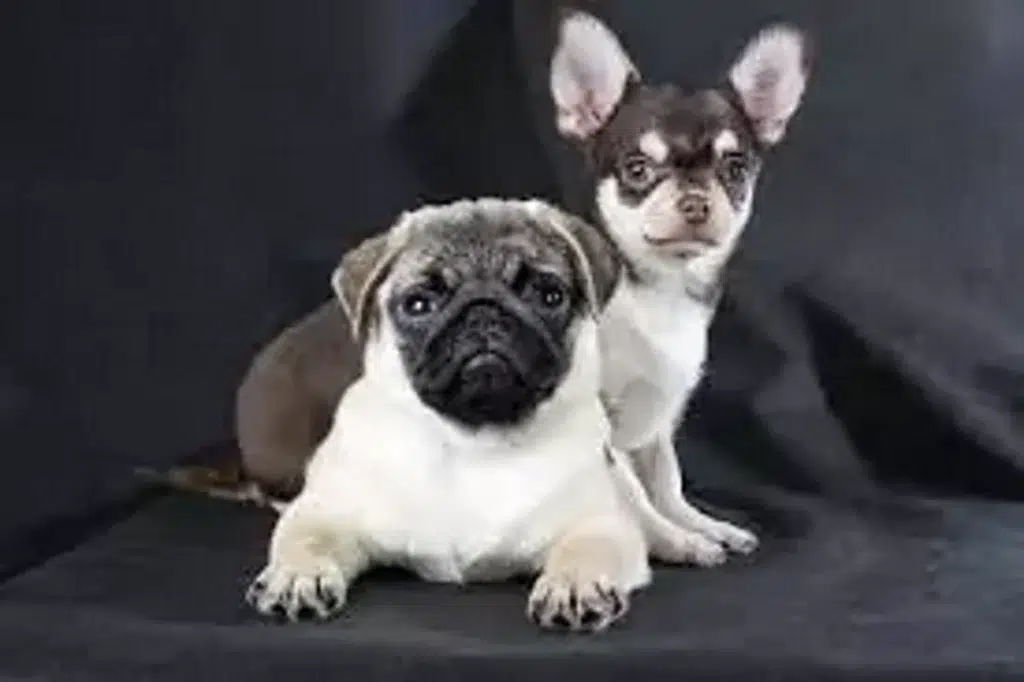
Both Chihuahuas and Pugs are known for their loyalty. Chugs, in turn, are very loyal and often have one favorite person.
Your Chug thrives best as a companion. This means you give and receive attention equally.
Consider:
- The one-person loyalty can be super cute.
- But on the other hand it can make training difficult.
- It is important to train your Chug to listen to other people.
Plus, loyalty can go too far at times. Your Chug may become territorial of you.
To avoid this, make sure you are setting boundaries. It is a good idea to distinguish areas your Chug can or cannot be in.
You might also be interested in: Reasons why Chihuahuas are cute
#17: They make good family dogs
While Chihuahuas are not always great with kids, Pugs often are.
Chugs make good family dogs, but children should be taught how to handle them.
Chugs are typically more on the easy-going side, like Pugs. Chihuahuas, on the other hand, can be too territorial and hyper.
This can mesh poorly with children. However, most Chug owners report their Chugs to be good with kids.
There are some crucial boundaries to set with children:
- Kids should not tug or poke at your Chug.
- Kids should be taught proper obedience commands to use.
- Your Chug should have designated safe spaces – no kids allowed.
Nonetheless, Chugs love to play and are affectionate. They can make great family companions.
Plus, their long lifespan allows them to grow alongside kids!
#18: They need lots of attention
Chugs love affection.
In fact, attention and affection are priorities for them.
Much of your Chug’s temperament will be affected by attention.
The more attention they receive, the happier they will be.
Caution: Attention should never be used to solve behavioral issues.
For example:
- Do not give in to begging.
- Do not try to stop barking by excessively petting.
- Do not allow your Chug’s moods to make the rules.
Instead, treat attention as a reward for obedience. Of course, casual snuggles are great too.
Your Chug needs to understand bad behavior does not receive attention.
Reading tip: 13 Reasons Why Chihuahuas Are So Needy And Clingy + 9 Tips
Care
It is important to keep your Chug taken care of.
Proper grooming and care are essential to owning a Chug.
This includes:
- Nail care.
- Teeth care.
- Cleaning their faces.
#19: Their face folds need cleaning
Chihuahuas have smooth skin, but Pugs do not.
Chugs, in turn, have a lot of skin on their face.
This means Chugs have lots of wrinkles and folds. That’s why it is highly important to keep their face clean.
This is because:
- Bacteria can build up.
- Debris can get caught in folds.
- Infection or irritation can occur.
It does not take much to clean your Chug’s face. Some water and a dog-friendly shampoo or soap will do.
Be thorough: Make sure to wash every wrinkle and fold.
Caution: Do not wash with shampoo or soap every day. This can dry out your Chug’s skin.
Simply wiping with water most days should work. Shampoo or soap should be used only 1 – 2 times per week.
#20: Chugs need their nails trimmed
Bigger dogs file their claws naturally from running and exercise.
Chugs often need more frequent claw trimmings.
This is because:
- They do not need extreme amounts of exercise.
- They most likely do not walk often on hard surfaces.
Having a Chug as a companion is great. But don’t forget that it’s not all fun and games. You should also put some maintenance into action.
You need to keep in mind grooming practices, like claws. It is very important to get their claws trimmed.
Claws that grow too long can fall out. They also can be accidentally torn out.
This can lead to infection. And if this happens, treatment can be expensive.
Note: Keep an eye on your Chug’s paw pads. Paw pads can get dry and cracked.
In this case, they may peel. Use an ointment or wax to protect your Chug’s paws.
If your Chug is injured, visit a vet immediately.
#21: They need their teeth brushed
That’s right, dogs get their teeth brushed too! That being said, Chugs may need some extra mouth care.
The Chihuahua’s genes play a big role in this. And it’s no surprise, since Chis are known for being susceptible to dental disease. Hence, this carries over to Chugs.
And not only that but Chugs have small mouths. Thanks to that, food and debris can easily become lodged and stuck.
And that brings me to brushing your Chug’s teeth. Is important for many reasons.
These include:
- Keeping vet costs low.
- Dislodging stuck food or objects.
- Preventing excessive plaque build up.
It can feel very awkward brushing your Chug’s teeth for the first time. What’s more, your Chug may thoroughly dislike it.
So feel free to ease into it. Start with the front teeth and see how it responds.
Work up to brushing their entire set of teeth.
Caution: If their gums bleed, call your vet immediately.
Behavior
Chug behaviors are often very cute.
Understanding the reasons for your Chug’s behaviors is crucial.
I will now cover:
- Barking.
- Small dog syndrome.
- Protection and leadership.
#22: They are prone to barking
Excessive barking is no fun. But bear in mind that Chugs may be excessively barking to communicate with you.
Barking as a behavior is useful to dogs. It is loud and hard to ignore. But it is an easy way for them to express needs or frustrations.
Chugs especially lack size. This makes them depend on noise to get attention.
But what are they trying to communicate?
Here are some reasons your Chug may be barking:
- Hunger.
- Boredom.
- Lack of discipline.
- Need to go to the bathroom.
Note: When your Chug is communicating, you should listen. A big component of stopping it is identifying the reason behind it.
#23: They can develop small dog syndrome
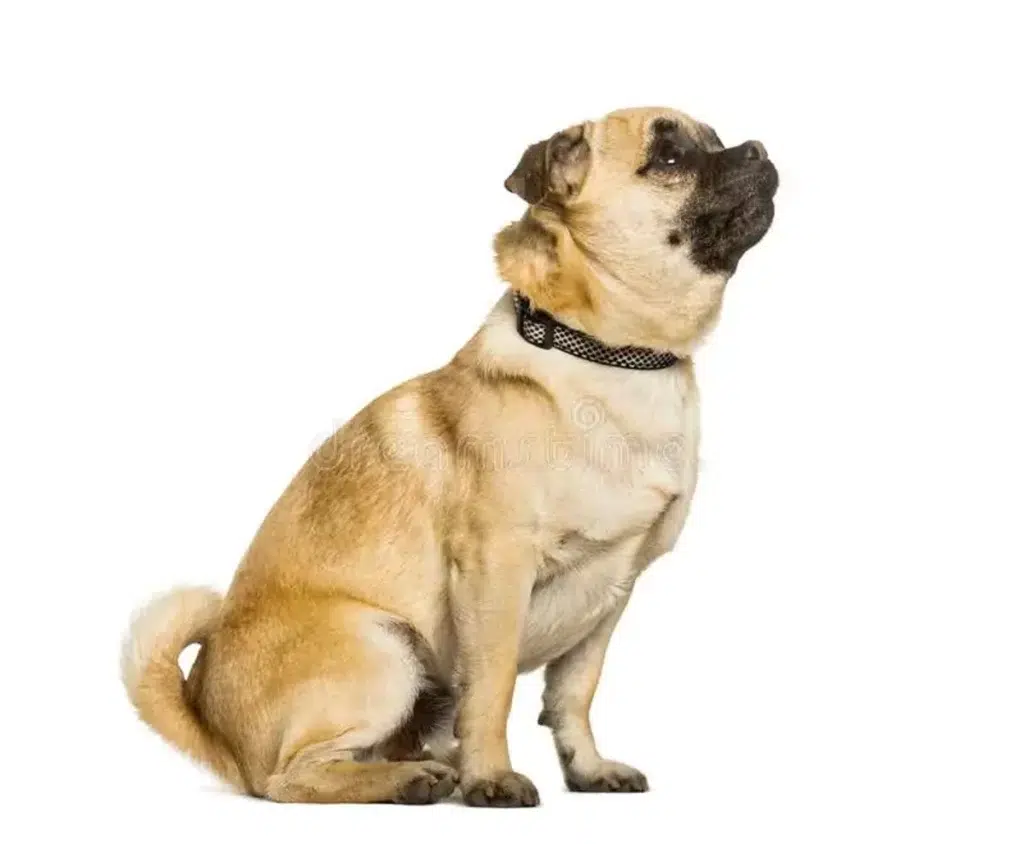
You may have noticed that small dogs can pick big fights.
Small dog syndrome is an attempt to overcome size through behavior.
To compensate for being small, your Chug tries to be assertive and confrontational.
This may come from an ancestral survival tactic.
This behavior may seem like confidence. In reality, it is often a result of lack of training and disobedience.
Purina lists small dog syndrome behaviors as:
- Growling.
- Excessive jumping.
- Excitable behavior.
- Lunging or snapping.
- Failure to obey commands.
- Reluctance to move off sofas and beds.
- Avoidance or fear of larger dogs and people.
If these behaviors persist, consider visiting a dog trainer.
#24: They need to feel protected
Related to small dog syndrome, Chugs may act territorial.
Chugs need a protector, or else they will fill the role themselves.
What this means for you is that:
- Chugs may develop aggressive habits.
- Chugs may be territorial of the living space.
- They will be protective and territorial of you.
It is crucial to teach your Chug that you are the protector. The protector role is one of leadership.
That is why obedience is a must. And your Chug will trust you more once you take charge. This will allow them to relax and not act as the protector.
Here are some tips for establishing yourself in this role:
- Establish boundaries in your home.
- Maintain consistent routines for your Chug.
- Greet humans or other dogs before your Chug.
Training
You have heard the word a few times already in this article.
Training is essential for Chugs.
Proper training will strengthen your bond with your Chug. Now that you’re aware of this, let’s look at:
- Mental stimulation.
- Positive reinforcement.
- The importance of routine.
#25: Positive reinforcement works best
Positive reinforcement is regarded as the most effective training. Positive reinforcement is reward-based obedience training.
Punishment, especially physical punishment should be avoided.
Examples of bad punishments include:
- Withholding food.
- Hitting, spanking, or ‘popping’.
- Punishing too long after behavior occurred.
Ignoring or denying attention is how you should respond to your Chug.
Chugs need lots of attention. This will make them respond strongly to a system of rewards.
Note: It is crucial for your Chug to relate good behavior with rewards.
#26: Chugs love mental stimulation
Chugs can become bored easily. Which makes it especially important to keep your Chug mentally stimulated.
Mental stimulation can help keep bad behaviors at bay during training.
When your Chug is mentally stimulated, they are less likely to:
- Bark excessively.
- Chew your belongings.
Here are some ways to keep your Chug stimulated:
- Play dates.
- Puzzle toys for dogs.
- Chew toys that hide treats.
#27: They need routine
Small dogs experience stress often.
Establishing a regular routine will help training immensely.
Your Chug will feel more comfortable with a routine. This is because they know what to expect.
Chugs are sensitive to environmental changes. Maintaining a routine gives your Chug more stability.
And the best part is that this makes training much easier.
Note: Spare time every day that is designated for training. That’s how training becomes part of your Chug’s routine.
Health issues
We all worry for our dogs’ health and safety.
Your Chug’s health is of utmost importance.
There are two categories of health issues: Genetic issues and physical injuries.
#28: Genetic issues
Chihuahuas and Pugs may have passed down health issues. As a result, Chugs have several genetic conditions that may develop.
These include:
- Gum disease.
- Eye cataracts.
- Respiratory issues.
All of these are treatable but require vet assistance. Finding a specialized vet is best for your Chug.
#29: Physical injuries
Because of their size Chugs are prone to physical injury.
A common injury is luxating patella. This means dislocation of the knee.
This can cause serious setbacks for your Chug, including:
- Inability to walk.
- Pain and discomfort.
With any physical injury, visit your vet immediately.
Puppies
So, you have decided Chugs are the dogs for you!
You must decide to buy from either a breeder or a shelter.
In this section you’ll find the pros and cons of breeders vs shelters.
#30: Chugs can be bought from breeders
Chugs are considered designer breeds and can be expensive.
Chug puppies can be bought from breeders for between $500 – $800.
Pros of buying from a breeder:
- You will most likely know their medical histories.
- You can select specific color or other characteristics.
Cons:
- They are fairly expensive.
- You may not be able to find a breeder.
#31: Chugs can be found at shelters
While they are designer breeds, many still end up at shelters.
Adopting Chug puppies from a shelter is less expensive, but riskier.
Of course, all dogs need love.
Here are the pros and cons of adopting shelter puppies.
Pros:
- Much less expensive.
- You may be able to foster first to see if it’s a fit.
Cons:
- You most likely won’t know any medical history.
- They may be traumatized.
Shelter dogs sometimes require more care and training.
Ultimately: Any dog can be a great dog! And Chugs make no exception – they will love you endlessly if you love them too.

